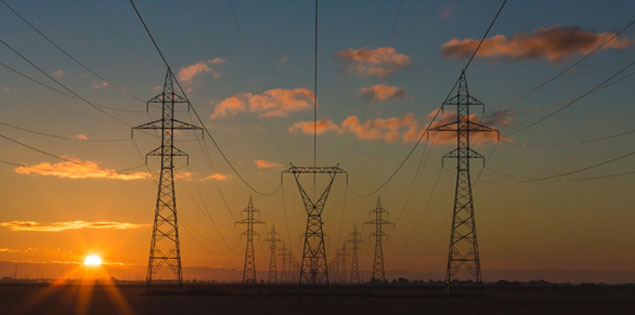India is committed to an ambitious net-zero carbon emission target by 2070 at COP26, in Glasgow last year. It also committed to avoiding carbon-intensive approaches by announcing to meet 50% of its energy demand from renewable sources by 2030. Achieving this ambitious target is certainly a mammoth task, especially for India, which is the third-largest greenhouse gas emitter in the world after China and the USA. As per the Global Carbon Project Report, India’s total emissions were 2,442 million tons of CO2 in 2020. India has adopted formidable mitigation measures in the NDC, to reduce and control its greenhouse emissions. For a developing country, the transition to a clean-energy economy, which is capital intensive, is also challenged due to priorities on other socio-economic development agendas.
A study by CEEW estimates that the country’s power, mobility, and industrial sector needs investments worth about US $10 trillion to achieve net-zero status. Delivering the net-zero target will require all possible sources of finance – public as well as private to be scaled up and further channelled into a commercially viable financial structure. Additionally, there is untapped potential in the private sector to finance this gap. Blended finance has emerged as an effective financial instrument to drive additional private sector investments into development funds.
Blended finance is the strategic use of catalytic capital from development finance or philanthropic funds to mobilize private finance towards sustainable development. Such structuring approaches make use of small amounts of donor funds to de-risks investments through credit enhancements, or concessional loans, which mobilizes greater private sector capital. This has proved to be an effective method to catalyse impact-driven investment in the private sector. However, blended finance comes with a set of challenges and opportunities, some of which are given below.
Challenges
- Complex structuring can hinder transparency and alienate investors Blending structuring and transparency are key to effective private investment opportunities
- Different actors of the blended finance structure use different frameworks, analytical approaches, risk models to determine risks and subsequent mitigation of risks towards delivering the development impact. This potentially may complicate the risk allocation negotiations, which sometimes raises objectivity from the private sector.
- Determining exit points in funding a long-term project is a challenging process in a blended financing structure.
Opportunities
- Blended finance structures provide opportunities for de-risking investment through credit enhancements, guarantees, concessional loans etc. This mobilises private sector capital through de-risking investments
- Blended finance facilitates market building, by triggering a market change in the form of adopting new technologies, innovative business models, pioneering investments, etc
- There is already an established market perception globally in the energy sector to adopt blending finance instruments
- India has been one of the most frequently targeted countries by international donor agencies in blended finance transactions
Based on a global landscape study on blended finance, energy has been the most frequent sector to adopt blended finance instruments. 2 such cases that demonstrated effective implementation of blended finance structure in the energy sector are mentioned below.
Case of Nordic Development Fund (NDF) to empower households to access renewable energy and lower power costs
Household water heating was one of the major sources of electricity demand in Rwanda. The NDF implemented household solar-operated water heaters to address the energy shortage. The NDF provided EUR 4 million in grant funding to the local project implementation unit – the Rwanda Energy Group (REG) and additional funding of US $300, 000 by the Global Environment Facility (GEF) via the World Bank. The blending occurs at a household level where 25% of the cost of the solar water heater is paid by the household upfront, 25% is channelled through grants and the remaining 50% of the cost is covered through a non-interest loan component within 24 months of the maturity period, which is deducted from the individual household energy bills.
Impact – Market development, adapting to renewable energy, reduction in greenhouse gases, overall achieving the SDG goals.
Case of Simpa Energy India for establishing the commercial viability of off-grid business models in renewable energy by Asian Development Bank (ADB)
Simpa Energy India is a provider of cost-effective solar energy solutions for households and enterprises. Access to electricity in rural and remote areas of India is poor due to a lack of proper transmission and distribution networks. The ADB administered a concessional loan of US $6 million through the Clean Technology Fund to Simpa Energy India to expand its off-grid solar home system. Customers install the photovoltaic system by paying the minimum cost of installation and payment of electricity bills which includes part of the instruments cost and customers were able to recover the cost in 1-2 years.
Impact – Reduction in greenhouse gas, improved access to electricity without large-scale infrastructure investments, promoting the use of solar energy as a reliable source of electricity.
The way ahead for India
India needs to identify areas in the energy sector where climate-friendly projects are needed the most. Innovation and adoption of climate mitigation policies across clean energy would be key to achieving the net-zero goal. All industries and business ecosystems are interdependent and a mere push may not be enough to achieve the ambitious net-zero status.. The hurdle of the private sector in financing impact-driven projects remains. Policies to bring about transparency for mobilizing investments in financing climate solutions can bring about the credibility of such investments in the market. A coordinated push by multilateral finance institutions, the government, and the private sector in promoting blended finance instruments, unlocking innovative business models, and mobilizing private spending on clean energy has the potential to boost the net-zero goal.
Bibliography-
- https://www.theguardian.com/environment/2020/may/05/one-billion-people-will-live-in-insufferable-heat-within-50-years-study
- https://thediplomat.com/2021/11/india-commits-to-net-zero-emissions-by-2070/
- https://www.outlookindia.com/website/story/business-news-challenges-before-india-to-achieve-net-zero-carbon-goal-by-2070/399557
- https://www.oecd.org/dac/financing-sustainable-development/blended-finance-principles/
- https://www.convergence.finance/blended-finance
- http://www.thkforum.org/wp-content/uploads/2018/01/Making-Blended-Finance-Work-for-SDGs.pdf
- https://read.oecd-ilibrary.org/development/making-blended-finance-work-for-the-sustainable-development-goals/insights-from-project-level-case-studies-on-blended-finance_9789264288768-11-en#page5
- https://www.oecd-ilibrary.org/docserver/ded656b4-en.pdf?expires=1649336001&id=id&accname=guest&checksum=C212E309334438890D3958DC1E648DC0

